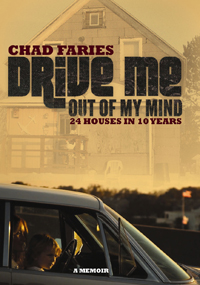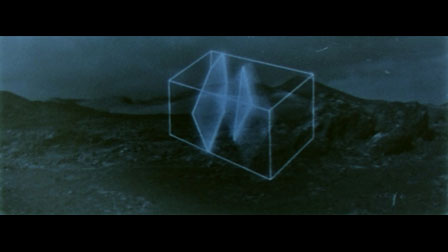Why do you guys even read this garbage that talks about National Poetry Month enough to annoy you into annoying me with all your jokes that would maybe be funny if I read this garbage? There is a whole world of actual people doing things to each other out there. It is spring, fornication is everywhere. Get fucked.
Two from PictureBox, Inc
 Sediment
Sediment
by CF
PictureBox, 2011
62 Pages / $30 Buy from PictureBox
CF is one of the few people—successfully, in my opinion—working in comics today with a distinct style that is simultaneously distinctly his (though often copied), while also reminiscent of the historical narrative of comics that came before him; recalling specifically Windsor McCay’s work from the beginning of the 20th century, and the multitude of Euro-comics in the 70s and early 80s (think Guido Crepax, Milo Manera or even a primitive Moebius). There’s a hint of what could be considered a naïve sense of character proportion, an acute attention to architectural shapes, and an abject (“melting”) sort of representation.
READ MORE >
April 5th, 2012 / 5:00 pm
Dan Hoy’s Stanley Kubrick’s 2001: A Space Odyssey
ORIGINS ARE THE FUTURE
Dan Hoy’s Stanley Kubrick’s 2001: A Space Odyssey
Featuring Def Leppard, Bad English, Bonnie Tyler, Orbital, Bon Jovi, Belinda Carlisle, The Sugarcubes, Shakespeare’s Sister, Journey, Roxette, The Bangles, Heart, Alphaville, The Knife, Air Supply, Duran Duran
LAWN AS CRAFT NOTE
“Jean would feel obliged if the editor would tell her if lawn billiards can be played on a croquet lawn?
Is there a book of rules on lawn billiards?”
LAWN AS CRAFT NOTE
AFTER FRANCIS PONGE
Lawn, a piece of land, a delineated piece of land, specifically referring to grass, specifically grass in a residential setting, each individual house with it’s own lawn, each lawn the responsibility of the owner or occupier of the house.
A piece of land separated from other similar pieces of land by intangible lines, ‘property lines’, ‘county lines’, ‘state lines’ or by tangible lines: buildings, sidewalks, roads, curbs, fields…
Fuck You, A Magazine of the Arts
 An amazing resource is now available via the Burroughs Archive: complete scans of Ed Sanders’s Fuck You, A Magazine of the Arts 1961-1965. I’m just now starting to peek into it…and wow!…its a crazy amalgam. Ginsberg, Warhol, Mary Mayo, Diane Wakoski, Artaud, the list goes on and on.
An amazing resource is now available via the Burroughs Archive: complete scans of Ed Sanders’s Fuck You, A Magazine of the Arts 1961-1965. I’m just now starting to peek into it…and wow!…its a crazy amalgam. Ginsberg, Warhol, Mary Mayo, Diane Wakoski, Artaud, the list goes on and on.
Snake Plissken’s Ninth Postcard to the Daughter of an Ex-US President
(if you are not Utopia but just happen to have picked this up out of the sea, first, thanks for doing so, you’re being a responsible nautical citizen, because you never know if it will simply say HELP or DEAR DAD, RUM-RUNNERS KIDNAPPED ME AND I WOULD RATHER STAY WITH THEM THAN WITH YOU. AND, NO, IT ISN’T A “SEX THING.” LOVE, CASSIE P.S. I EXPECT TO KEEP RECEIVING MY ALLOWANCE, HOWEVER or I HAVE FOUND ATLANTIS AND SHOULD THE PORTAL REMAIN OPEN, IT WILL NOT ONLY BE AQUATIC ARCHITECTURE THAT WILL ARISE IN A SEETHING FOETOR BUT THE DEEP ONES THEMSELVES, BANISHED FROM SURFACE AND SIGHT BEFORE OUR TIME, AND ALREADY THE HIDEOUS, THROATY CALL OF Y’HA-NTHLEI BOOMS GURGLING FROM THE LEAGUES BELOW, I BEG OF YOU, DESTROY THE ELDER TRIDENT, DESTROY IT NOW, CAST IT INTO FIRE, OR IT WILL BE TOO LATE FOR US ALL BECAUSE THEY WILL WANT TO INTERMARRY AND HAVE KIDS AND THINGS WILL GET REALLY FISHY AND TERRIBLE, I’M NOT BEING RACIST, I’M JUST SAYING LOOK AT INNSMOUTH, THE ECONOMY NEVER RECOVERED, FIRST THEY TOOK ALL THE JOBS AND THEN THEY MOVED BACK TO THE SEA AND LEFT THOSE BUSINESSES HIGH AND DRY, AND WHO WAS LEFT TO CLEAN UP THE MESS, I’M JUST SAYING YOU KNOW WHAT THOSE PEOPLE ARE LIKE, I MEAN YOU KNOW and second you have no business reading this, prithee give it to its intended reader and keep your dripping nose out of the business of two distanced hearts)
READ MORE >
“I know you are reading this poem …”
It is June 1993 and I’m halfway through a roadtrip that will kill a friendship. I’ve fled the campground for the beach, trudging through the sandy tunnel under the highway with a notebook and a copy of An Atlas of the Difficult World. Because I can’t imagine spending fifteen dollars to tour Hearst Castle, my roadtrip companion has gone off to do it herself, in a huff. I take my chair, my notebook, my Adrienne Rich volumes and head out to the beach, free for two or three hours to read and write.
The trip is going very badly, and I can’t quite articulate why, even to myself. I am 29 years old, in the summer between a masters and Phd program. I’ve started a novel, and been admitted to a PhD program where I hope I’ll have time to finish it. I’m terrified of taking on more debt but stopping now means I’ll have to get a “real” job to pay off the MA I’ve just finished, and if I do that I doubt I’ll finish my novel. I’m betting on myself in a way that seems outrageous. I’m broke, but I’ve always been broke, so I’m used to it, but my friend is not, and although I told her before we started that I didn’t have any money, she seems startled by how little money no money actually is.
THE GENERATIONS OF AMERICA
These are the generations of America.
Sirhan Sirhan shot Robert F. Kennedy. And Ethel M. Kennedy shot Judith Birnbaum. And Judith Birnbaum shot Elizabeth Bochnak. And Elizabeth Bochnak shot Andrew Witwer. And Andrew Witwer shot John Burlingham. And John Burlingham shot Edward R. Darlington. And Edward R. Darlington shot Valerie Gerry. And Valerie Gerry shot Olga Giddy. And Olga Giddy shot Rita Goldstein. And Rita Goldstein shot Bob Monterola. And Bob Monterola shot Barbara H. Nicolosi. And Barbara H. Nicolosi shot Geraldine Carro. And Geraldine Carro shot Jeanne Voltz. And Jeanne Voltz shot Joseph P. Steiner. And Joseph P. Steiner shot Donald Van Dyke. And Donald Van Dyke shot Anne M. Schumacher. And Anne M. Schumacher shot Ralph K. Smith. And Ralph K. Smith shot Laurence J. Whitmore. And Laurence J. Whitmore shot Virginia B. Adams. And Virginia B. Adams shot Lynn Young. And Lynn Young shot Lucille Beachy. And Lucille Beachy shot John J. Concannon. And John J. Concannon shot Ainslie Dinwiddie. And Ainslie Dinwiddie shot Dianne Zimmerman. And Dianne Zimmerman shot Gerson Zelman. And Gerson Zelman shot Paula C. Dubroff. And Paula C. Dubroff shot Ebbe Ebbeson. And Ebbe Ebbeson shot Constance Wiley. And Constance Wiley shot Milton Unger. And Milton Unger shot Kenneth Sarvis. And Kenneth Sarvis shot Ruth Ross. And Ruth Ross shot August Muggenthaler. And August Muggenthaler shot Phyllis Malamud. And Phyllis Malamud shot Josh Eppinger III. And Josh Eppinger III shot Kermit Lanser. And Kermit Lanser shot Lester Bernstein. And Lester Bernstein shot Frank Trippett. And Frank Trippett shot Wade Greene. And Wade Greene shot Kenneth Auchincloss. And Kenneth Auchincloss shot Bruce Porter. And Bruce Porter shot John Lake. And John Lake shot John Mitchell. And John Mitchell shot Kenneth L. Woodward. And Kenneth L. Woodward shot Lee Smith. And Lee Smith shot Arthur Cooper. READ MORE >
Drive Me Out of My Mind: 24 Houses in 10 Years
 Drive Me Out of My Mind: 24 Houses in 10 Years
Drive Me Out of My Mind: 24 Houses in 10 Years
by Chad Faries
Emergency Press, 2011
280 pages / $16 Buy from Amazon
In his 1958 book, The Poetics of Space, Gaston Bachelard writes, “if we want to go beyond history, or even, while remaining in history, detain from our own history the always too contingent history of the persons who have encumbered it, we realize that the calendars of our lives can only be established in its imagery.” The Poetics of Space describes a philosophy of poetic Imagism (precision of imagination) coupled with, in part, a phenomenology of the home as (not just) mortar, 2×4, and stone. In my reading of Bachelard, our histories are only as real as the Images that embody them.
I was reminded of The Poetics of Space when I read Chad Faries’ memoir, Drive Me Out of My Mind: 24 Houses in 10 Years. The book is separated into a chapter-per-house-lived-in, each chapter begins with a street-and-town, a year, and some song lyrics—a soundtrack to the book that almost acts as white noise on which we can focus when the screaming and partying in the foreground get too depressing. Each chapter ends with “and then we moved.” The book begins at Faries’ birth in 1971 and moves its readers through a difficult–sometimes funny, sometimes grotesque–landscape of pick-up-and-go with his drug-booze-and-sex addicted mother, her family of women, and a wild cast of male characters, to 1981. Drive Me is not only scaffolded by the houses the author lived in before he hit puberty, but Faries’ houses exist in a space created by the coupling of memory and imagination in order to forge the memoired homestead. “Our whole house,” Faries writes early on, “was made of the shadows of others, and we sucked that gray light into our guts to push the total darkness away and claim everything as our own.”
April 4th, 2012 / 12:00 pm



